Are you curious about the nutritional content of Lunchables? Join me as I delve into the facts and figures behind this popular kids’ lunch choice.
The Lunchable nutrition facts can vary depending on the specific Lunchable product. The information includes the amount of calories, fat, saturated fat, cholesterol, sodium, carbohydrates, net carbs, fiber, glucose, protein, vitamins (such as vitamin A, vitamin C, calcium, and iron), and fatty acids in each Lunchable. The percent daily values are based on a 2,000 calorie diet. It is important to note that Lunchables are not always considered a healthy option, as some products can be high in calories, saturated fat, and sodium. It is recommended to carefully read the nutrition labels and consider healthier alternatives for lunch.
Key Takeaways:
- The nutritional content of Lunchables varies based on the specific product.
- Lunchable nutrition facts include details about calories, fat, sodium, carbohydrates, protein, and vitamins.
- It is important to read nutrition labels and consider healthier alternatives for lunch.
- Some Lunchables can be high in calories, saturated fat, and sodium.
- Considering portion sizes and nutritional values is key when making dietary choices.
Understanding Lunchable Nutrition Facts
Before we delve into the specific nutritional details, let’s take a closer look at what Lunchable nutrition facts actually entail. The Lunchable nutrition facts can vary depending on the specific Lunchable product. The information includes the amount of calories, fat, saturated fat, cholesterol, sodium, carbohydrates, net carbs, fiber, glucose, protein, vitamins (such as vitamin A, vitamin C, calcium, and iron), and fatty acids in each Lunchable. The percent daily values are based on a 2,000 calorie diet.
Lunchables are a popular choice for convenient, on-the-go meals. They often come with pre-packaged components like lunch meats, cheese, crackers, and sometimes even desserts. While they may seem like a convenient option, it is important to note that Lunchables are not always considered a healthy choice due to their nutritional content.
Some Lunchables can be high in calories, saturated fat, and sodium, which are nutrients that should be consumed in moderation. For individuals who are watching their calorie intake or trying to make healthier choices, it is recommended to carefully read the nutrition labels and consider healthier alternatives for lunch.
| Nutrient | Daily Value |
|---|---|
| Calories | 2000 |
| Fat | 65g |
| Saturated Fat | 20g |
| Cholesterol | 300mg |
| Sodium | 2400mg |
| Carbohydrates | 300g |
| Net Carbs | 270g |
| Fiber | 30g |
| Glucose | 130g |
| Protein | 50g |
| Vitamin A | 5000 IU |
| Vitamin C | 60mg |
| Calcium | 1000mg |
| Iron | 18mg |
| Fatty Acids | 70g |
Remember, while Lunchables can offer convenience, it is important to make informed choices and consider the overall nutritional value of your meals. By understanding the Lunchable nutrition facts and exploring healthier alternatives, you can make choices that align with your dietary goals and preferences.
The number of calories in a Lunchable can significantly impact your overall energy intake. Let’s explore the calorie content of different Lunchable varieties.
When it comes to Lunchables, the calorie content can vary depending on the specific product. From the classic ham and cheese to the pizza and chicken nugget variations, each Lunchable option offers a different calorie count. For example, the ham and cheese Lunchable typically contains around 350-400 calories, while the pizza Lunchable can range from 400-500 calories. It’s important to note that these numbers are approximate and may vary slightly between different brands and product variations.
To put this into perspective, the average adult requires around 2000-2500 calories per day to maintain their weight and meet their energy needs. A Lunchable can thus provide a significant portion of your daily calorie intake. It’s essential to be mindful of your portion sizes and consider the calorie content of your Lunchable when planning the rest of your meals and snacks for the day.
| Lunchable Variation | Calories |
|---|---|
| Ham and Cheese | 350-400 |
| Pizza | 400-500 |
| Chicken Nuggets | 450-550 |
Remember, Lunchables are not always considered a healthy option, as some variations can be high in calories, saturated fat, and sodium. While they may be convenient, it’s essential to read the nutrition labels carefully and consider healthier alternatives for lunch that provide a more balanced and nutritious meal. Opting for fresh ingredients, such as whole grains, lean proteins, and plenty of fruits and vegetables, can help you make more informed choices and support your overall health and well-being.
Next, let’s take a closer look at the ingredients used in Lunchables and their potential impact on nutrition.
Unveiling Lunchable Ingredients: What’s Really in Them?
It’s time to uncover the mystery behind Lunchable ingredients and understand how they contribute to the overall nutritional value. As I dug deeper into the Lunchable nutrition facts, I discovered a wide range of ingredients used in these popular pre-packaged meals.
While Lunchables offer convenience and variety, it’s important to be aware of what you’re consuming. Let’s take a closer look at some of the common ingredients found in Lunchables:
- Processed Meats: Many Lunchables include processed meats like ham, turkey, or chicken. These meats are often highly processed and may contain added preservatives, such as nitrates or nitrites.
- Cheese: Cheese is a key component of most Lunchables. It provides a source of calcium and protein, but it’s worth noting that processed cheese may contain additives and higher sodium levels compared to natural cheese.
- Crackers: Lunchables typically include crackers as a side item. These crackers are often made with refined grains and may contain added sugars, artificial flavors, and preservatives.
- Sauces and Spreads: Some Lunchables come with sauces or spreads like ketchup, mustard, or mayonnaise. These condiments can contribute to the overall flavor but may also contain added sugars or unhealthy fats.
- Treats: Many Lunchables include a treat, such as cookies or candy. While these may be enjoyable, they are often high in sugar and should be consumed in moderation.
It’s worth mentioning that the specific ingredients and their nutritional value can vary between different Lunchable products. To make a more informed choice, I recommend carefully reading the nutrition labels and considering healthier alternatives for lunch.
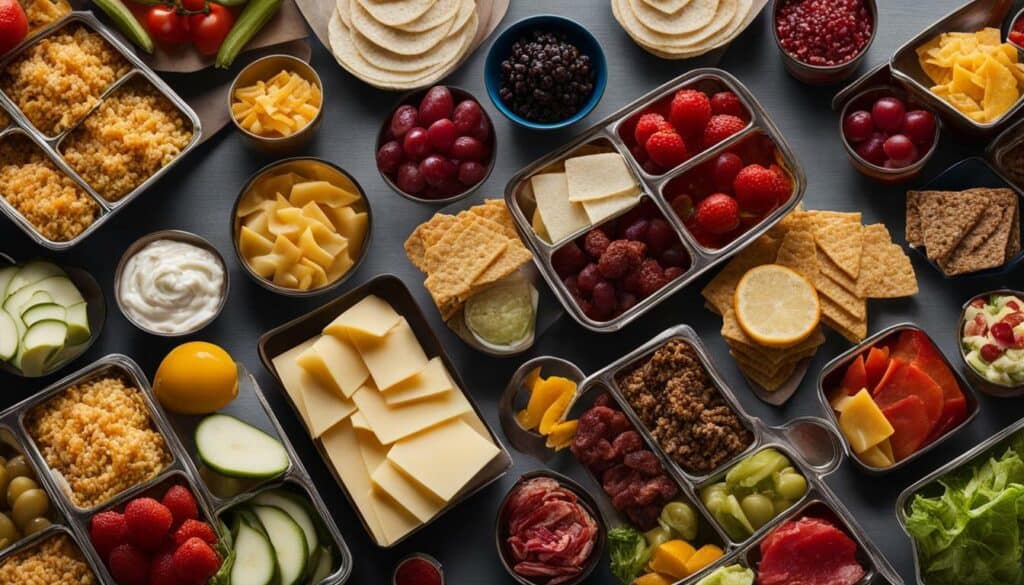
Table: Key Lunchable Ingredients and Nutritional Information
| Ingredient | Nutritional Information |
|---|---|
| Processed Meats | High in sodium and may contain added preservatives |
| Cheese | Source of calcium and protein, but processed cheese may have higher sodium levels |
| Crackers | Often made with refined grains and may contain added sugars |
| Sauces and Spreads | May contain added sugars or unhealthy fats |
| Treats | High in sugar and should be consumed in moderation |
By understanding the ingredients found in Lunchables, you can make more informed decisions about your nutrition. Remember to prioritize whole, unprocessed foods whenever possible and consider healthier alternatives for a balanced lunch.
Navigating Allergens: What to Watch Out for in Lunchables
For individuals with allergies, it’s crucial to be aware of potential allergens in Lunchables. Let’s navigate through the allergen landscape. Lunchables may contain common allergens such as milk, wheat, soy, and tree nuts. It’s important to carefully read the ingredient labels on each Lunchable product to ensure it is safe for consumption. Manufacturers are required to clearly list any allergens present in the product, making it easier for individuals with allergies to identify and avoid them. If you or your child has a known allergy, it’s always best to consult with a healthcare professional or read the nutrition labels to determine if a Lunchable is suitable.
To help you stay informed, here’s a breakdown of some allergens that may be present in Lunchables:
| Allergen | Possible Lunchable Products |
|---|---|
| Milk | Ham & Cheddar Cracker Stackers, Turkey & Cheddar Sub Sandwich |
| Wheat | Turkey & American Cracker Stackers, Pizza with Pepperoni + Capri Sun |
| Soy | Chicken Dunks + Applesauce, Chicken Popper Kabobbles |
| Tree nuts | Pizza with Pepperoni + Capri Sun, Turkey & Cheddar Sub Sandwich |
Remember, this is just a sample list and allergens can vary depending on the specific Lunchable product. Always double-check the ingredient labels for the most up-to-date information.
Being aware of potential allergens in Lunchables is an essential part of managing allergies and ensuring the safety of yourself or your loved ones. By taking the time to read nutrition labels and understanding the ingredients, you can make informed choices and find suitable alternatives if needed. Remember, if you have any concerns or questions about allergens, it’s always best to consult with a healthcare professional for personalized advice.
Serving Size Matters: Portion Control in Lunchables
Did you know that the serving size of Lunchables can significantly impact your nutritional intake? Let’s explore the role of portion control.
When it comes to Lunchables, it’s important to pay attention to the serving size listed on the packaging. This information tells you how much of the product makes up one serving. By sticking to the recommended serving size, you can better manage your calorie intake and ensure you’re getting a balanced meal.
For example, the serving size for a Lunchables Ham & Cheddar Cracker Stackers is one package, which contains 260 calories. However, if you were to consume two packages, thinking you’re having a light meal, you would actually be consuming 520 calories. That’s double the amount you intended to have! Another point is Lunchables can include a drink and dessert which impacts calorie count.
To further illustrate the significance of portion control, let’s take a look at the Lunchables Pizza with Pepperoni. The serving size for this product is one package, which consists of three mini pizzas. Each serving contains 310 calories. However, if you were to have two packages, thinking you’re still within a reasonable calorie range, you would actually be consuming 620 calories. That’s quite a difference!
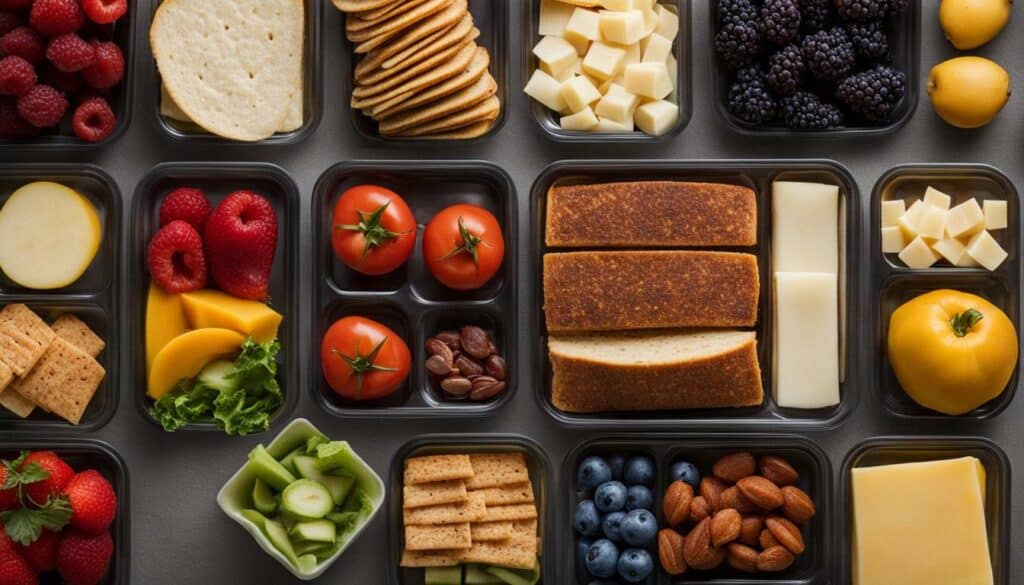
As you can see, the serving size plays a crucial role in managing your nutritional intake. It’s essential to pay attention to the recommended serving size and be mindful of portion control. By doing so, you can enjoy Lunchables as a convenient and satisfying option without compromising your health and well-being.
The Sweet Truth: Understanding Sugar Content in Lunchables
Sugar content is a key factor to consider when evaluating the nutritional value of Lunchables. Let’s uncover the sweet truth. While Lunchables may seem like a convenient and fun option for a quick lunch or snack, it’s important to be aware of the sugar content in these pre-packaged meals. Excessive sugar consumption has been linked to various health issues, including obesity, diabetes, and heart disease. By understanding the sugar content in Lunchables, you can make informed choices about what you and your family are consuming.
When examining the nutritional information of Lunchables, you may notice that they contain added sugars. These can come in various forms, such as corn syrup, dextrose, or cane sugar. Added sugars provide empty calories and offer little to no nutritional value. They can also lead to a spike in blood sugar levels, providing a temporary energy boost followed by a crash. It is recommended to limit your intake of added sugars and opt for healthier alternatives that are lower in sugar.
| Lunchable Variant Without Capris Sun | Sugar Content (g) |
|---|---|
| Lunchable Ham & Cheese Crackers | 4 |
| Lunchable Pizza with Pepperoni | 4 |
| Lunchable Turkey & Cheddar with Crackers | 5 |
As you can see in the table above, the sugar content in Lunchables can vary depending on the variant. It’s important to read the nutrition labels and choose options with lower sugar content. Additionally, you can consider making your own lunchable-style meals at home using healthier ingredients, such as whole grain crackers, lean protein, and fresh fruits or vegetables. This allows you to have more control over the sugar content and overall nutritional value of your meal.
Remember, moderation is key when it comes to consuming sugar. While Lunchables can be enjoyed as an occasional treat, it’s important to prioritize a balanced and nutritious diet. By being mindful of the sugar content in Lunchables and making informed choices, you can take a step towards a healthier lifestyle.
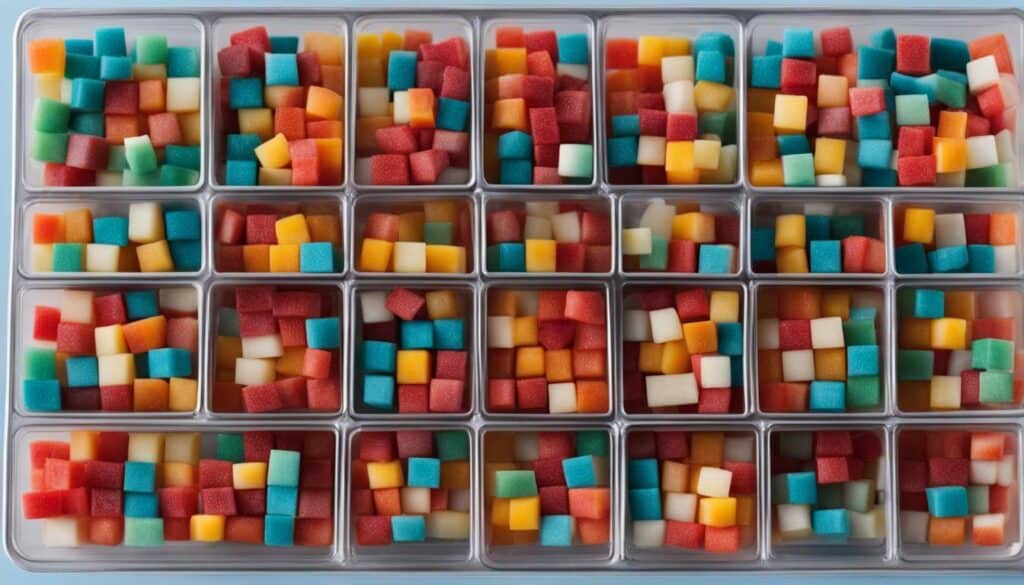
Protein is an essential nutrient for a healthy diet, and Lunchables can be a source of this vital macronutrient. Let’s explore the protein power within Lunchables.
Lunchables provide varying amounts of protein depending on the specific product. The protein content can range from around 7 grams to 15 grams per serving. For example, the Turkey & Cheddar Cracker Stackers Lunchable contains approximately 11 grams of protein, while the Ham & Swiss Lunchable provides about 9 grams. These protein amounts contribute to a balanced meal and can help support muscle growth and repair.
It’s important to note that protein quality is also a significant factor to consider. Lunchables typically include protein sources such as turkey, ham, or chicken, which are lean meats that contain essential amino acids. These amino acids are the building blocks of protein and play a crucial role in many biological processes in our bodies.
To give you a better idea of the protein content in Lunchables, here’s a table outlining the protein amounts in some popular Lunchable varieties:
| Lunchable Variety | Protein Content per Serving |
|---|---|
| Turkey & Cheddar Cracker Stackers | 11 grams |
| Ham & Swiss | 9 grams |
| Pepperoni Pizza | 7 grams |
| Nacho Cheese Dip & Salsa | 8 grams |
While Lunchables can provide a convenient source of protein, it’s important to consider the overall nutritional profile of the meal. It’s recommended to pair Lunchables with additional fruits, vegetables, or whole grains to create a well-rounded and nutritious lunch option. Remember to read the nutrition labels and choose Lunchables with lower amounts of saturated fat, sodium, and added sugars for a healthier choice.
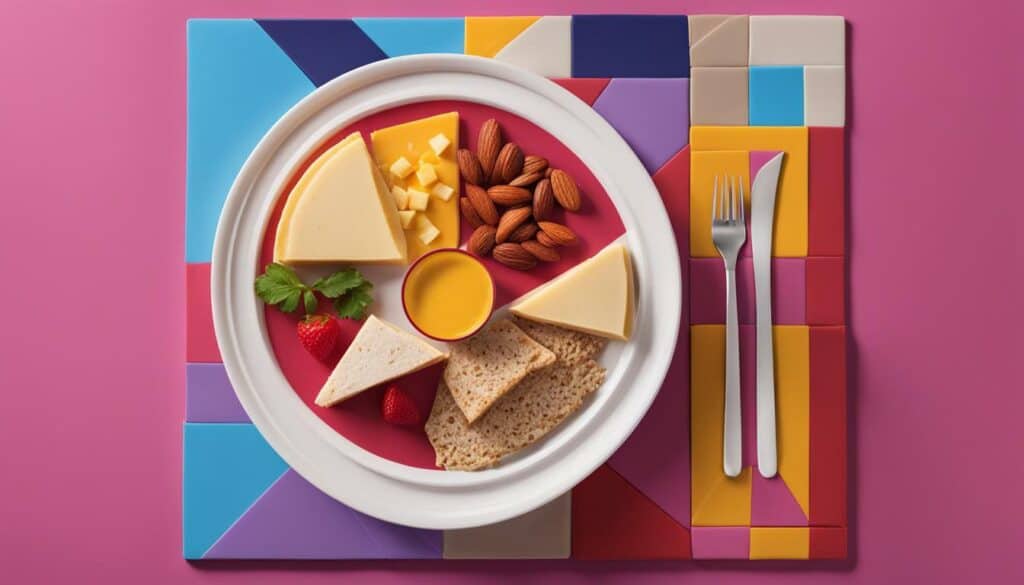
So, the next time you reach for a Lunchable, take a moment to appreciate the protein power it offers. Incorporating Lunchables into a balanced diet can provide a convenient and satisfying meal option for those on the go.
Vitamins and Minerals: Boosting Nutrition in Lunchables
Lunchables may contain essential vitamins and minerals that play a crucial role in supporting a balanced diet. Let’s uncover the nutritional benefits.
One of the key vitamins found in Lunchables is vitamin C, which is known for its immune-boosting properties. With a busy lifestyle, it can be challenging to ensure we get enough vitamin C from our regular meals. However, Lunchables can provide a convenient and tasty way to supplement our vitamin C intake.
In addition to vitamin C, Lunchables can also be a source of calcium, which is essential for strong bones and teeth. Calcium is particularly important for growing children, as it supports their development and helps prevent conditions such as osteoporosis later in life.
Moreover, Lunchables can contain iron, an important mineral that helps carry oxygen throughout the body. Iron is crucial for overall energy levels and brain function. Including Lunchables in your diet can help ensure you’re getting a good amount of iron to support your daily activities.
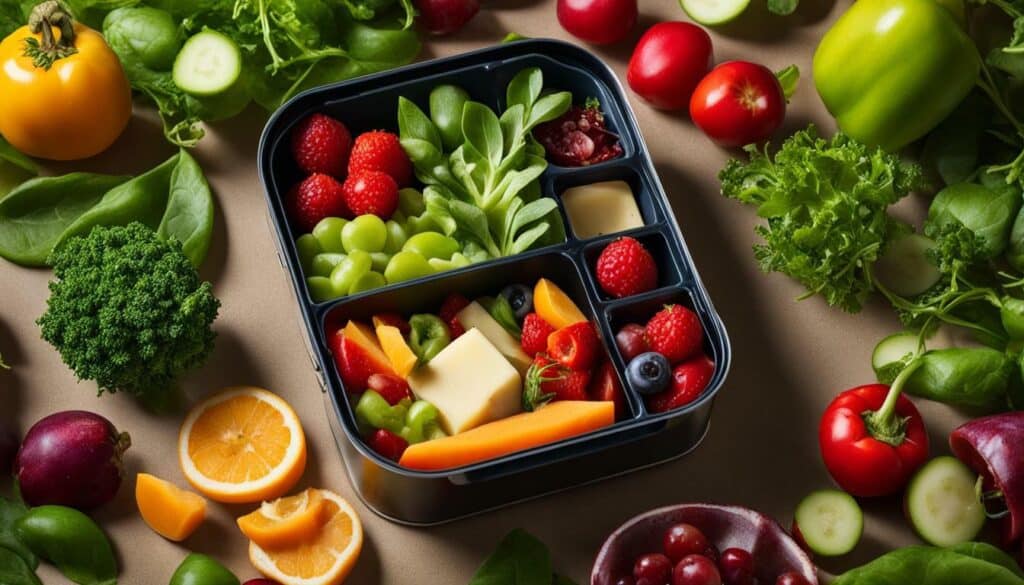
It’s worth noting that while Lunchables can provide a convenient source of vitamins and minerals, they should not be relied upon as the sole provider of these nutrients. It’s always best to consume a varied and balanced diet that includes a range of fruits, vegetables, lean proteins, and whole grains to maximize your nutritional intake.
| Nutrient | Amount per Serving | % Daily Value |
|---|---|---|
| Vitamin C | 25mg | 28% |
| Calcium | 150mg | 12% |
| Iron | 1.8mg | 10% |
Conclusion
Armed with the knowledge of Lunchable nutritional information, you can now make more informed decisions about this popular kids’ lunch option.
The Lunchable nutrition facts can vary depending on the specific Lunchable product. The information includes the amount of calories, fat, saturated fat, cholesterol, sodium, carbohydrates, net carbs, fiber, glucose, protein, vitamins (such as vitamin A, vitamin C, calcium, and iron), and fatty acids in each Lunchable. The percent daily values are based on a 2,000 calorie diet.
It is important to note that Lunchables are not always considered a healthy option, as some products can be high in calories, saturated fat, and sodium. It is recommended to carefully read the nutrition labels and consider healthier alternatives for lunch.
By understanding the lunchable nutritional information, you can ensure that you or your kids are making choices that align with your nutritional goals. Whether you’re looking to manage calorie intake, reduce sodium, or increase protein, being aware of the nutritional content allows for more informed decision-making. Remember to always read the labels, compare different Lunchable options, and prioritize a balanced diet for optimal health.
FAQ
Q: What nutritional information is included on Lunchable packaging?
A: The nutritional information on Lunchable packaging typically includes details such as calories, fat, saturated fat, cholesterol, sodium, carbohydrates, net carbs, fiber, glucose, protein, vitamins (such as vitamin A, vitamin C, calcium, and iron), and fatty acids.
Q: Are Lunchables considered a healthy option?
A: Lunchables are not always considered a healthy option, as some products can be high in calories, saturated fat, and sodium. It is important to read the nutrition labels carefully and consider healthier alternatives for lunch.
Q: How do I determine the nutritional value of a specific Lunchable product?
A: To determine the nutritional value of a specific Lunchable product, refer to the nutrition facts panel on the packaging. It will provide detailed information about the product’s calorie content, fat, sodium, protein, and other nutrients.
Q: What serving size should I consider when looking at Lunchable nutritional information?
A: The serving size listed on the Lunchable packaging is important to consider when interpreting the nutritional information. It tells you the amount of food that the provided values correspond to.
Q: Are there any common allergens in Lunchables?
A: Yes, Lunchables can contain common allergens such as milk, wheat, soy, and nuts. It is important to carefully check the ingredient list and allergen warnings on the packaging to determine if a specific Lunchable product is safe for your dietary needs.
Q: Why is it important to be mindful of the sugar content in Lunchables?
A: Being mindful of the sugar content in Lunchables is important as excessive sugar consumption can have negative effects on health, such as weight gain and increased risk of chronic diseases. It’s recommended to choose Lunchables with lower sugar content or opt for healthier alternatives.
Q: What role do vitamins and minerals play in Lunchables?
A: Lunchables may contain vitamins and minerals that contribute to overall nutrition. These nutrients are essential for various bodily functions and support overall health. It’s important to consider the presence of vitamins and minerals when evaluating the nutritional value of Lunchables.
What are the Nutritional Facts of Red Bull?
Red bull ingredients include carbonated water, sucrose, glucose, citric acid, taurine, sodium bicarbonate, magnesium carbonate, caffeine, niacinamide, calcium pantothenate, pyridoxine HCl, and cyanocobalamin. Each can of Red Bull provides 110 calories, 27 grams of carbohydrates, and 80 milligrams of caffeine, giving you a boost of energy when you need it.

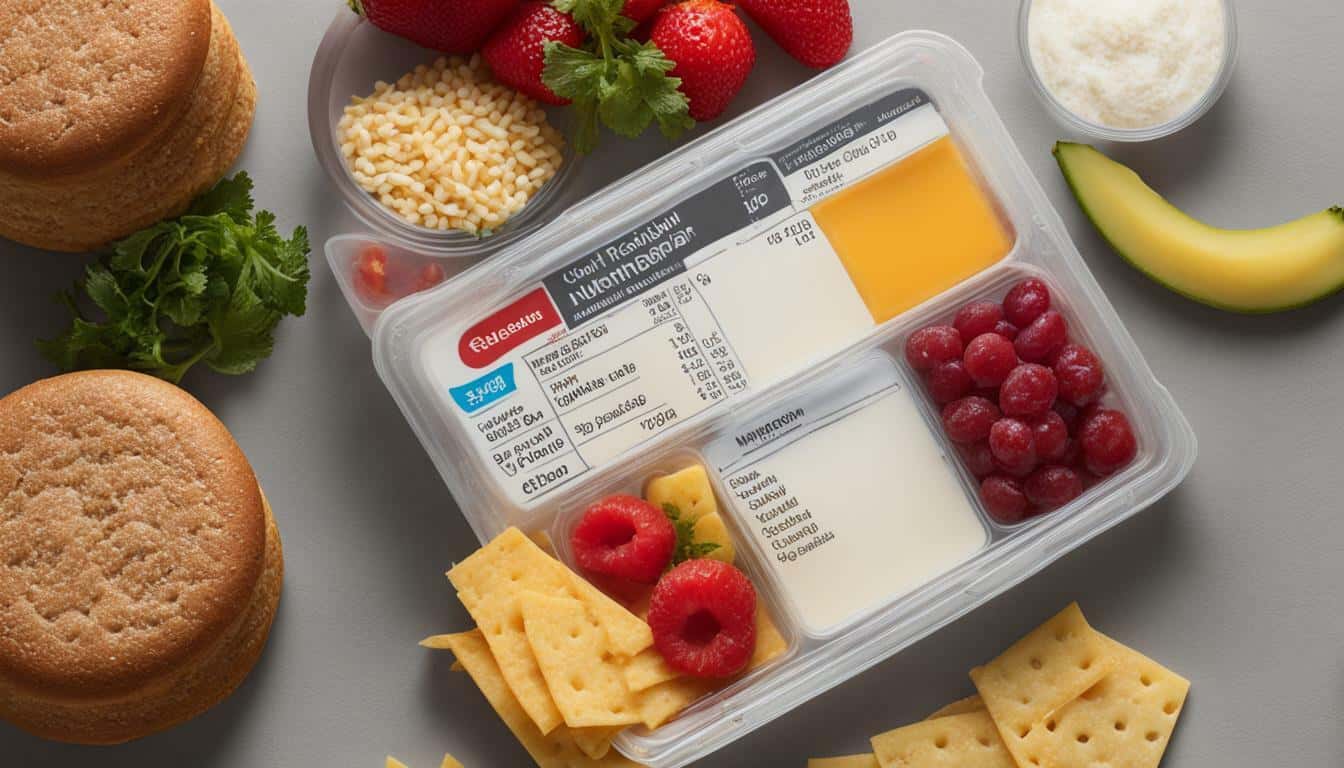



Leave a Reply